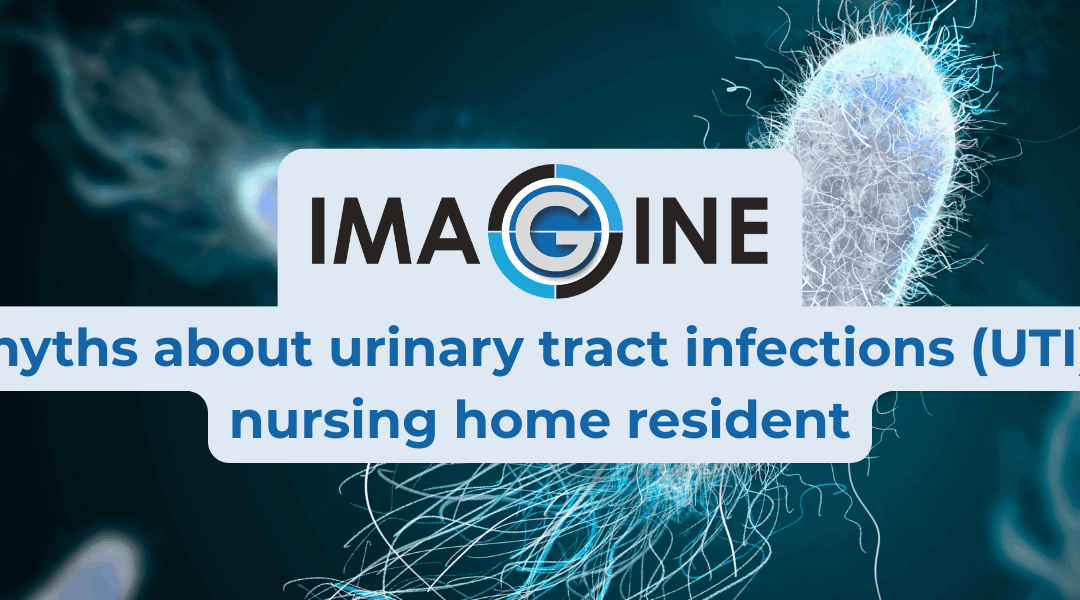As part of our mission to improve antibiotic prescribing and reduce inappropriate use in long-term care settings, The IMAGINE Project offers a valuable resource on its website: “8 Myths About Urinary Tract Infections (UTIs) in Nursing Home Residents.”
This toolkit supports healthcare professionals in identifying common misconceptions that still influence clinical decisions—often leading to unnecessary or harmful treatments in older adults.
Myths vs. Facts
MYTH 1
A positive urine dipstick always indicates a UTI.
FACT
Asymptomatic bacteriuria is common and does not necessarily mean there is an infection.
MYTH 2
UTIs cannot be prevented.
FACT
Good perineal hygiene and frequent diaper changes can prevent bacteria from entering the urinary tract.
MYTH 3
Any presence of bacteria in urine requires antibiotics.
FACT
Up to 50% of older residents have bacteria in the urine without symptoms. Antibiotics are not recommended in these cases.
MYTH 4
Confusion or agitation strongly suggest a UTI.
FACT
These symptoms have multiple causes in older adults and should not automatically be attributed to a UTI.
MYTH 5
“Better safe than sorry” — prescribing antibiotics just in case is harmless.
FACT
Antibiotics can cause side effects and may do more harm than good, especially in frail older adults. Unnecessary use also drives antimicrobial resistance.
MYTH 6
Dark or foul-smelling urine is a sign of UTI.
FACT
Without other symptoms, this is often just a sign of dehydration.
MYTH 7
Giving prophylactic antibiotics before changing a urinary catheter reduces UTI risk.
FACT
Evidence shows this is unnecessary and not recommended unless clinically indicated.
MYTH 8
Drinking more fluids is enough to prevent UTIs in nursing home residents.
FACT
Hydration is important, but it alone is not sufficient to prevent UTIs in nursing homes. Good hygiene practices, appropriate
toileting schedules and care strategies are essential for UTI prevention in this setting
This toolkit is part of a broader collection of resources developed by The IMAGINE Project to promote safer, evidence-based decision-making in the care of institutionalized older adults.
Access the full toolkit in our resources section

